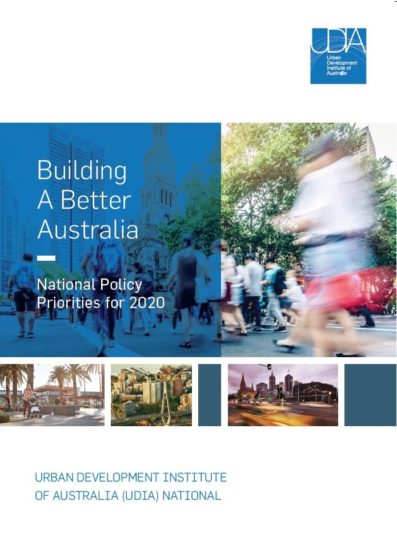
Building a Better Australia.
How?
UDIA National applauds the Federal Government’s endeavours to boost confidence in housing markets.
Comfort around the policy settings for negative gearing and capital gains tax, a new initiative to help close the deposit gap for first homebuyers, and the commencement of efforts to ease access to housing credit are positive steps.
However, we do view the opportunity for further momentum as both urgent and attainable. Initiatives that cement and extend existing policy goals are promoted in our National Priorities for 2020.

